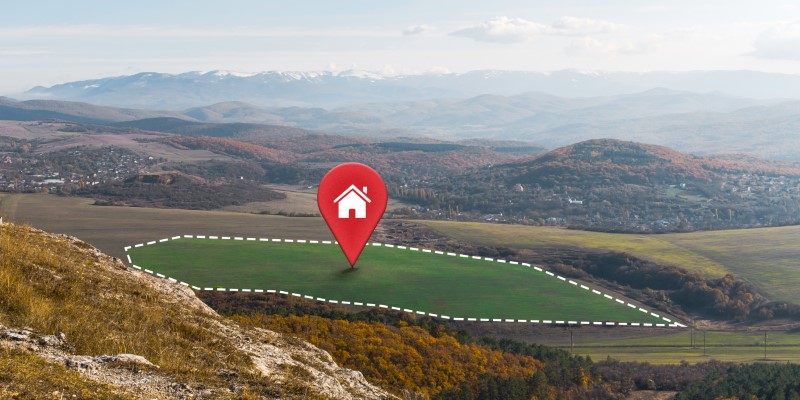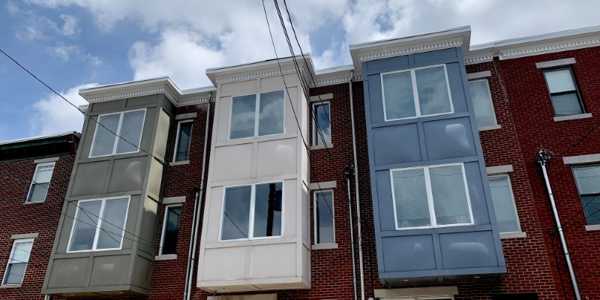Climate-Resilient Real Estate: Adapting To Environmental Changes
Author: Tooba
The real estate industry is no stranger to challenges, but in 2024, climate change is one of the sector's most pressing issues. Rising sea levels, increasing temperatures, and more frequent extreme weather events are no longer hypothetical. These environmental shifts are already reshaping how and where people live, work, and invest. As climate risks intensify, the need for climate-resilient real estate has become critical. In response, developers, investors, and urban planners are embracing new strategies to ensure that properties can withstand the growing impacts of a changing planet.
Understanding The Impact Of Climate Change On Real Estate
Climate change affects real estate in ways that were once difficult to imagine. Coastal regions, once viewed as prime real estate, are now confronting the risks of rising sea levels and heightened flooding. Once safe from the ravages of extreme weather, inland regions are experiencing droughts, heatwaves, and wildfires. This new reality has forced a reevaluation of how real estate is developed, managed, and valued.
One of climate change's most immediate impacts is on property values. Homes and commercial buildings in high-risk areas are seeing their market values drop as insurance costs soar, and potential buyers or renters hesitate to commit to properties that may soon be underwater or otherwise uninhabitable. In some cases, entire communities are being abandoned due to the constant threat of climate-induced disasters. The financial risks associated with climate change are leading many investors to reconsider their portfolios and prioritize assets that are less vulnerable to environmental changes.

Adapting Construction Practices For Resilience
Construction practices are being adapted to combat the growing risks to make buildings more resilient to climate change. This shift in approach means thinking not just about sustainability but also about durability. New materials, designs, and technologies are emerging that help structures withstand floods, wildfires, and hurricanes while maintaining energy efficiency.
For example, buildings are elevated on stilts or pilings in flood-prone regions to avoid water damage. More robust building codes require impact-resistant windows and roofs that can withstand extreme winds in areas at risk of hurricanes. Developers are also incorporating fire-resistant materials in regions vulnerable to wildfires. At the same time, in places with rising temperatures, cooling systems are being designed to minimize heat buildup, improving the comfort and safety of occupants.

Location Matters: Identifying Climate-Resilient Areas
As climate risks become more pronounced, the importance of location in real estate has shifted. In the past, proximity to water, stunning views, or vibrant city centres may have been the top selling points for a property. Now, climate resilience is emerging as a critical consideration. Areas less prone to extreme weather events or implementing robust climate adaptation measures are becoming more attractive to buyers and investors.
Cities and regions that are proactively addressing climate change—through better infrastructure, green spaces, and forward-thinking policies—are positioning themselves as safer, more desirable places to live and work. Communities that invest in flood defences, such as levees and sea walls, or those that promote urban greenery to combat heat islands, are becoming models of climate resilience.
At the same time, there is growing interest in areas with naturally lower climate risks. High-altitude areas, inland cities, and regions with temperate climates are increasingly appealing to individuals seeking to evade the harshest effects of climate change. These areas, often considered less vulnerable to rising sea levels or extreme heat waves, are gaining a competitive edge in the real estate market.

The Role Of Technology In Climate-Resilient Real Estate
Technology plays an increasingly significant role in creating climate-resilient real estate. Advanced forecasting models allow developers and city planners to predict future climate risks more accurately, guiding decisions on where to build and how to design structures. Intelligent building technologies, such as automated climate control systems, are also helping to improve buildings' resilience and efficiency.
Moreover, innovations in materials science are leading to the development of more robust, more sustainable construction materials. Concrete that can absorb water and reduce flooding risk or energy-efficient materials that reflect heat can make a real difference in protecting properties from climate hazards.
Beyond construction, technology is helping to reshape real estate management. For example, sensors and data analytics can monitor building performance in real-time, allowing for faster responses to environmental changes. This capability improves the safety and comfort of occupants and helps identify maintenance needs, reduce long-term costs, and enhance property longevity.

Urban Planning And Policy Changes For A Resilient Future
Urban planning plays a crucial role in developing climate-resilient real estate. Cities are rethinking their layouts, zoning laws, and building codes to reduce vulnerability to climate change. This shift requires a coordinated effort between governments, developers, and local communities to ensure that real estate can adapt to evolving environmental conditions.
For example, in flood-prone cities, zoning laws are being updated to restrict new developments in high-risk areas. Water usage regulations and drought-resistant landscaping are becoming mandatory for new projects in regions with severe droughts. Coastal cities, particularly, are adopting more stringent policies to protect against rising sea levels, including waterfront development restrictions and flood-resistant infrastructure requirements.

Future-Proofing Real Estate Investments
For real estate investors, the concept of future-proofing is becoming essential. Climate change is introducing new risks that must be considered in investment strategies. Investors are increasingly looking for properties that can endure environmental challenges in the short term and over decades.
This approach often involves evaluating geographic risks, the resilience of building materials, and the local government's commitment to addressing climate issues. Real estate investors are likelier to conduct detailed climate risk assessments before purchasing or developing properties. These assessments help to identify potential vulnerabilities and determine whether the property will maintain its value as climate risks increase.
Conclusion
As climate change continues to reshape the world, the real estate sector is forced to adapt fundamentally. Climate-resilient real estate represents a necessary evolution where durability, sustainability, and adaptability are paramount. From rethinking construction practices to implementing new technologies and policies, the industry is beginning to rise to the challenge. But beyond the buildings themselves, climate resilience in real estate is about creating safer, more equitable communities that can thrive in an unpredictable future.



